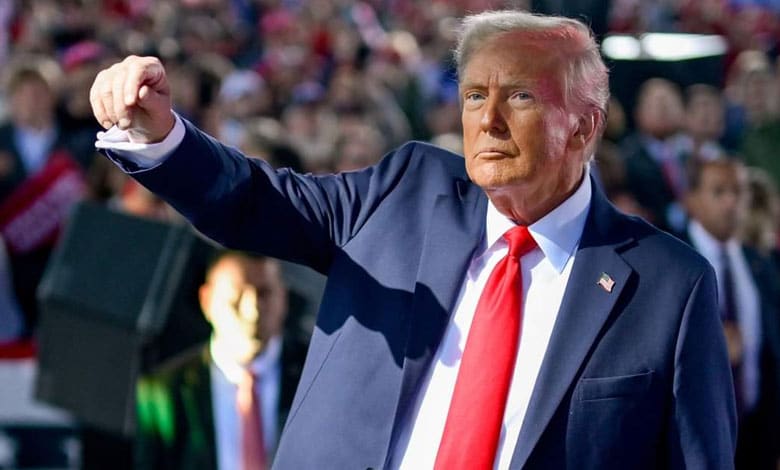Trump Pauses Tariffs on Mexico, But Import Taxes on Canada and China Still in Effect
Mexican President Claudia Sheinbaum announced on Monday that, following a conversation with U.S. President Donald Trump, tariffs on Mexican goods would be paused for one month. This development was later confirmed by the White House.

Washington: Mexican President Claudia Sheinbaum announced on Monday that, following a conversation with U.S. President Donald Trump, tariffs on Mexican goods would be paused for one month. This development was later confirmed by the White House.
Sheinbaum posted on X, stating, “Mexico will reinforce the northern border with 10,000 members of the National Guard immediately, to stop drug trafficking from Mexico to the United States, particularly fentanyl.” She further mentioned that the U.S. committed to addressing the trafficking of high-powered weapons into Mexico.
Table of Contents
The Mexican President emphasized that the two nations would continue discussions on security and trade, with tariffs on hold for the time being.
Ongoing Tariffs on Canada and China
While the tariff pause applies to Mexico, Trump‘s tariffs on Canada and China remain scheduled to take effect on Tuesday. The uncertainty surrounding the duration of these deals has heightened concerns about the potential for a broader trade war, as Trump has warned of further import taxes.
Trump confirmed his conversation with Canadian Prime Minister Justin Trudeau and indicated another call would take place later in the day. He expressed his frustration with Canada, stating that the country had not been cooperative, despite longstanding U.S.-Canada partnerships, including cooperation during World War II and the aftermath of the 9/11 terrorist attacks.
Also Read: Elon Musk Threatens to Shut Down USAID, calls it a “Criminal Organization” Know Here Why
U.S. Complaints on Canada’s Policies and Drug Trade
Trump took to social media to voice his dissatisfaction with Canada, highlighting that the country doesn’t allow U.S. banks to operate there. He also reiterated concerns over the drug trade, claiming that drugs are entering the U.S. from both Mexico and Canada, contributing to the U.S. drug war and causing widespread fatalities.
Financial Markets React to Potential Tariffs
Financial markets showed some signs of uncertainty, with stock market indices experiencing a modest selloff. The announcement of new tariffs had raised fears that inflation could rise and global trade and growth might be disrupted. However, some remained hopeful that the tariffs would be short-lived.
Trump’s Stand on Trade Imbalance and Tariffs
Trump continued to express his belief that the U.S. cannot sustain a trade imbalance with its two largest trade partners, Mexico and Canada. He also stated that tariffs could be lifted if these countries took stronger actions against illegal immigration and fentanyl smuggling.
Mexico is facing a 25% tariff on its imports to the U.S., while Canada faces a 25% tariff on its goods and a 10% tariff on its energy products. China is also facing a 10% additional tariff, particularly due to its role in the production and sale of fentanyl.
White House Downplays Trade War Concerns
Kevin Hassett, Director of the White House National Economic Council, attempted to downplay the idea of a trade war, stating that Trump’s actions are aimed at addressing the drug crisis, not at waging a trade war.
However, Trump’s rhetoric often focuses on his dissatisfaction with foreign countries running trade surpluses, with discussions about tariffs being linked to both national security and economic concerns.
Economic Experts Warn of Negative Impact
Economists have warned that the tariffs could lead to higher prices and economic slowdown. Joe Brusuelas, chief economist at consultancy RSM, predicted that while a U.S. recession is unlikely this year, the tariffs could slow growth and push up borrowing costs, particularly in the housing and auto sectors. He also predicted a potential rise in government borrowing costs, with the yield on the 10-year Treasury bond possibly climbing to 4.75%-5%.
If unresolved, the tariffs could significantly impact the U.S. economy, pushing inflation and interest rates higher.
